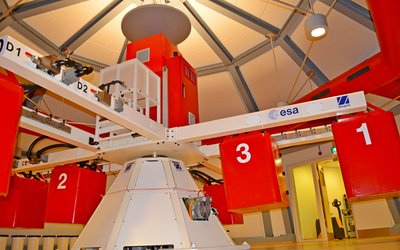Meet the teams: Spin-Leidenfrost
The Spin-Leidenfrost team is composed of two PhD students from the University of Liège Belgium, investigating the effects of hypergravity on Leidenfrost drops.
![]()
![]()
![]()
Study of Leidenfrost droplet under hypergravity![]()
| University | University of Liège (ULg) |
| Endorsing professor |
Stéphane Dorbolo University of Liège |
| Technician |
Médéric Mélard University of Liège |
| ELGRA mentor |
Anne-Laure Biance University Claude Bernard Lyon 1 |
| Team | Laurent Maquet, Martin Brandenbourger |

Leidenfrost effect refers to drops released on substrate heated above a threshold temperature. Above this temperature, the drop levitates over a film of its own vapour, preventing contact with the substrate.
The threshold temperature is always found to be higher than the boiling temperature of the liquid and depends on various parameters: the substrate (roughness, wettability, nanoporosity, thermal conductivity, thermal capacity), the liquid (boiling temperature), the way the drop is deposited (Webber number) and of course, this threshold depends on the gravity level.
The threshold temperature is seen as a threshold thickness of the vapour film. The observation of the evolution of the threshold temperature variations with the gravity level will allow the team to confirm or reject this hypothesis.
Furthermore, the shape of the drop comes from a balance between the superficial tension of the liquid, which tends to make it spherical, and the inertial forces which tends to flatten it. The team will also observe the evaporation of drops at different gravity levels to measure geometrical characteristics of the drops and their evaporation rates.

The experimental setup consists of a heated substrate that can be inclined by servo-motors. An infra-red camera, situated above the substrate, finds the position of the drop. A response is applied on the servo-motors if the drop has moved away from the centre of the substrate. This setup allows leidenfrost drops to maintain a static position, when they are usually very mobile because of their contactless state. The substrate is an aluminium polished plate in which two heaters are inserted. Both the heating system and self-levelling system are controlled by PID labview-made regulations.
The data is acquired through a video camera with a line of sight parallel to the substrate. This allows for calculations on the volume of the drop during its whole lifetime as well as the height of the drop or its radius.
Read the final experiment report here.






